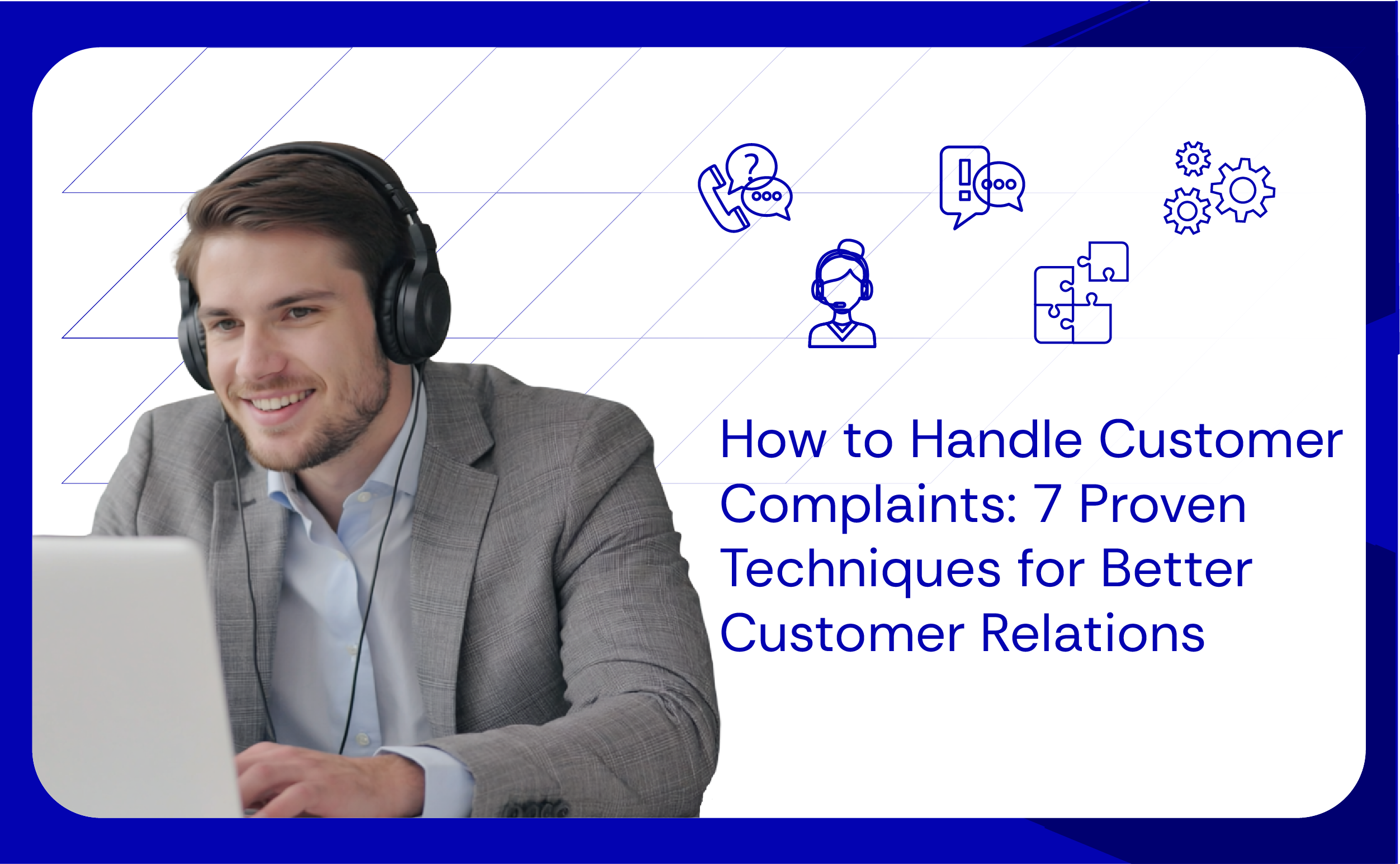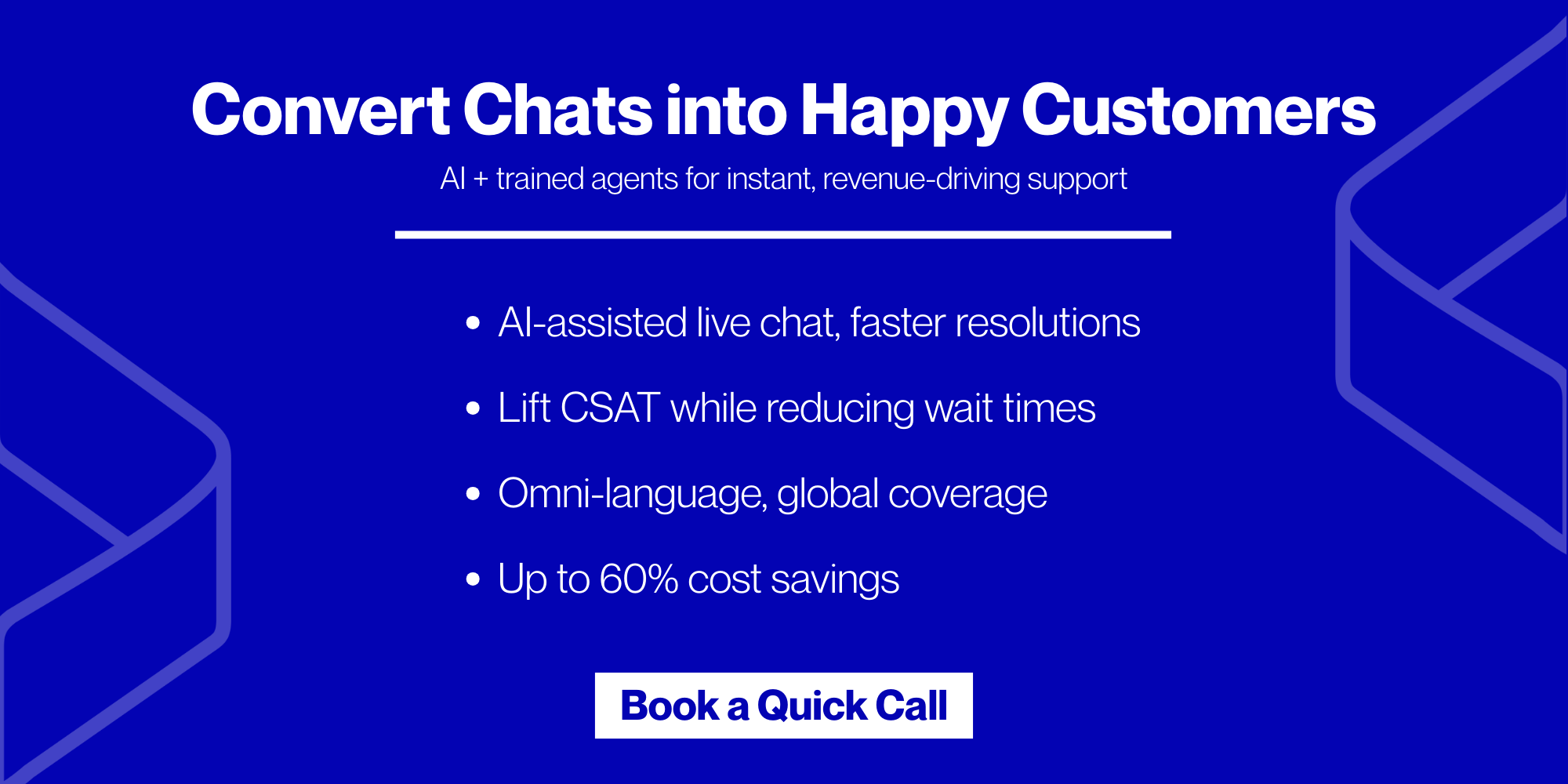Key Takeaways
- Handled correctly, complaints can turn frustrated customers into loyal brand advocates.
- Listening and empathy are the foundation of great customer service.
- Using proven techniques like active listening, clear communication, and quick resolutions can boost customer retention and trust.
- Technology and proactive engagement can prevent complaints before they happen.
Why Handling Customer Complaints the Right Way Matters

Whether it’s a furious email, a one-star review, or a heated phone call, dealing with unhappy customers isn’t exactly fun. It can be stressful, frustrating, and, let’s be honest—sometimes downright exhausting. But here’s the reality for consumer brands and D2C companies in fast-moving markets like the U.S., U.K. & Australia:
Customer complaints are opportunities to build loyalty, reduce churn and increase revenue growth.
Think about it. A customer who takes the time to complain is a customer who still cares. They could have just walked away silently and never bought from you again, but they didn’t. They’re giving you a chance to make things right.
And the stats prove it:
- 83% of customers feel more loyal to brands that resolve complaints effectively (Khoros).
- Customers who have issues resolved within 5 minutes are willing to spend more in the future (Harvard Business Review).
- 96% of customers leave brands after poor service (Microsoft).
Now, here’s the bad news…
Most businesses handle complaints terribly. They ignore them, delay responses, send robotic apologies, or make customers jump through hoops for a resolution. And you know what happens then?
- 96% of customers leave brands because of bad customer service.
- A dissatisfied customer tells 9–15 people about their bad experience—and in the D2C space, that often means negative reviews on public platforms.
Ouch! That’s a PR nightmare waiting to happen.
But here’s the good news: if you know how to handle customer complaints the right way they strengthen trust and retention. So, how do you handle complaints like a pro? How do you turn angry customers into your biggest fans? Let’s break down 7 proven techniques that will change the way you think about customer complaints and how you handle them.
1. Don’t Just Hear. Really Listen!
When handling customer complaints, active listening is your superpower. It’s the difference between a customer feeling heard vs. feeling ignored. So, what does active listening actually look like in customer service? Here’s what great agents do:
- Let the customer vent fully before responding.
- Use empathetic phrases (“I completely understand why this would be frustrating.”) that show you care. Say things like:
- Repeat key points back to the customer to confirm understanding. This makes the customer feel like they’ve been heard and ensures you’re on the same page.
- Avoid interrupting, rushing, or brushing off their concerns.
Why does this work? When customers feel like they’re being listened to, not just processed, their frustration instantly drops. Even if the issue isn’t immediately resolved, they’re far more likely to stay patient, cooperative, and loyal to your brand.
2. Show Genuine Empathy
Ever been frustrated about a problem, only to have someone brush it off like it’s no big deal? Annoying, right?
That’s exactly how customers feel when they don’t feel heard.
Customer service is all about acknowledging emotions. A little empathy can completely flip the tone of a conversation. Here’s how you can show empathy when handling customer complaints:
- Use compassionate language: A simple phrase like “I hear you. Let’s get this sorted out right away” instantly makes the customer feel heard and validates their feelings.
- Match their tone: If a customer sounds frustrated, meet them where they are with a calm, understanding voice.
- Apologize sincerely (even if it’s not your fault): Sometimes, a simple “I’m really sorry for this inconvenience” can instantly defuse a tense situation.
- Make a reconciliatory gesture: A small gesture such as a token discount or a small upgrade can go a long way towards making disgruntled customers feel valued.
Why does this work?
- Customers feel heard.
- The extra gesture turns frustration into loyalty.
3. Stay Calm & Professional—Even When the Customer isn’t
Not all customers will be polite. Some will be rude, angry, or downright unreasonable. And when that happens, it’s tempting to match their energy—but that’s the worst thing you can do.
Your goal? Stay calm, professional, and in control. Because when you stay composed, it actually helps de-escalate the situation.
How can you stay professional when handling tough complaints?
- Take a deep breath before responding. It keeps you from reacting emotionally.
- Don’t take it personally.
- Use de-escalation language: Saying “I understand why this situation is upsetting, and I’m here to help” validates the customer’s feelings and shifts the conversation towards a solution.
4. Offer a Clear and Fair Solution
A complaint without a resolution is just another reason for customers to leave.PwC found that one-third of customers stop doing business after just one bad experience.
No one enjoys going back and forth, waiting days for a reply, or dealing with complicated refund policies. Customers want quick, fair solutions—and if they don’t get them? They’re gone.
- A third of all customers stop doing business with a brand after a single bad customer experience according to research done by PWC.
- However, 77% of customers forgive bad experiences delivered by a business whose CX the customers believe is very good.
So, when you’re handling customer complaints, how do you resolve issues in a way that keeps customers happy and loyal?
- Ask the customer what they want.
- If a mistake was made, own it.
- Set clear expectations for resolution time (and follow through on your promise).
Remember, the faster you fix a problem, the more likely a customer is to forget the frustration and remember the great service.
5. Follow Up to Ensure Customer Satisfaction
You’ve solved the issue. That’s great! But if you really want to turn a frustrated customer into a loyal fan, don’t just stop there.
Most businesses stop once an issue is fixed. Great businesses follow up.
It’s a simple step, yet most companies don’t do it. And that’s a huge missed opportunity.
Following up shows that you care beyond just fixing the issue. It turns a one-time resolution into a long-term relationship. Here’s what you need to do:
- Send a quick check-in message: Use something along the lines of “Hey Paul, I just wanted to follow up and make sure your issue was fully resolved. Is there anything else I can do for you?” This simple action creates a tremendous impact on customers.
- Offer a small goodwill gesture: A discount, freebie, or upgrade can completely flip a customer’s perception of your brand. For example: “Thanks for your patience! Here’s a 10% discount for your next order—just our way of saying we appreciate you.” This not only makes the customer feel valued but also increases the odds of another purchase.
- Track complaint resolutions: This step improves customer satisfaction long-term. Use a CRM system or spreadsheet to keep tabs on who complained, what was done, and whether they stayed a customer. This helps you identify patterns (Are refunds increasing? Do people complain about the same thing?) and proactively fix bigger issues.
6. Learn from Complaints
Let’s be honest, no business is perfect. Mistakes happen. Products break. Shipments get delayed. Websites glitch. But here’s the difference between average companies and great ones:
Average companies just apologize. Great companies analyze and act.
So, how do you turn complaints into business improvements?
- Track common complaint trends.
- Update FAQs & self-service options.
- Train your team based on real customer pain points.
The result? Complaints drop. Customer satisfaction soars.
7. Use Technology to Prevent Future Complaints
Wouldn’t it be amazing if you could stop customer complaints before they even happen? Customers hate reaching out for support—so why not fix issues before they need to? Proactive CX is where high-performing brands win. Gartner reports that 87% of customers want proactive communication from businesses. So, how can you use technology to handle customer complaints before they escalate?
AI-powered chatbots are changing the game when it comes to handling customer complaints. With AI, customers can get instant responses to FAQs, troubleshoot common problems, and even resolve basic complaints in seconds. Imagine a customer getting frustrated because they don’t have an update on their order. Rather than making them reach out and wait, a chatbot can immediately provide real-time tracking details and put their mind at ease.
But AI isn’t just about answering questions; it’s also about detecting frustration before it escalates. Sentiment analysis tools can scan emails, chat messages, and even social media posts to identify when a customer is unhappy. Think about someone angrily tweeting, “Why does this app crash every time I use it?!” AI can flag that message in real-time and alert support before it turns into a full-blown PR nightmare. This kind of proactive approach not only prevents frustration but also builds trust and loyalty.
Why does this work?
- AI doesn’t just solve complaints, it prevents them.
- Customers appreciate proactive communication. It builds trust.
- Businesses that invest in complaint prevention save money, reduce churn and increase customer loyalty.
Final Thoughts
No business enjoys getting complaints. But here’s the secret: complaints are actually one of your biggest opportunities. When handled correctly, they become a powerful tool for building stronger relationships, boosting retention, and even increasing sales.
Great complaint resolution isn’t just about fixing problems. It’s about responding fast, showing empathy, and offering fair solutions that make customers feel valued. And when businesses do this right, they also win free word-of-mouth marketing, better reviews, and long-term revenue growth.
The challenge for CX leaders in consumer brands and D2C: delivering world-class complaint resolution takes time, resources, and a highly skilled support team. Many businesses struggle to keep up with response times, manage high complaint volumes, or provide 24/7 support. That’s where outsourcing your CX strategy can be a game-changer.
At Atidiv, we help brands in the U.S., U.K. & Australia:
- Scale support teams instantly without hiring headaches.
- Leverage AI-powered automation to handle complaints faster and more efficiently.
- Deliver 24/7 complaint resolution so customers always get timely responses.
- Improve retention and sales with a proactive, customer-first approach.
At Atidiv, we don’t just manage customer support—we convert each interaction into a loyalty-building moment. By adding a personal touch to innovation, we create experiences that keep customers happy, engaged, and wanting to come back for more.
Partner with Atidiv to convert every complaint into a loyalty-building opportunity.
FAQs On How To Handle Customer Complaints
1. How do you handle customer complaints effectively?
Stay calm, listen actively, show empathy, offer a fair solution, and follow up to ensure customer satisfaction. Complaints are opportunities to build stronger relationships.
2. What are the 7 techniques for handling customer complaints?
Active listening, empathy, professionalism, clear solutions, follow-ups, business improvements, and AI-powered prevention.
3. How can businesses prevent customer complaints?
Use AI chatbots, track complaint trends, provide self-service options, and proactively address potential issues before they escalate.
4. Why is customer complaint handling important?
A well-handled complaint boosts customer loyalty, prevents churn, and even leads to increased sales through referrals and repeat purchases.
5. Should businesses offer compensation for complaints?
Not always, but a small goodwill gesture can turn a frustrated customer into a loyal advocate.

